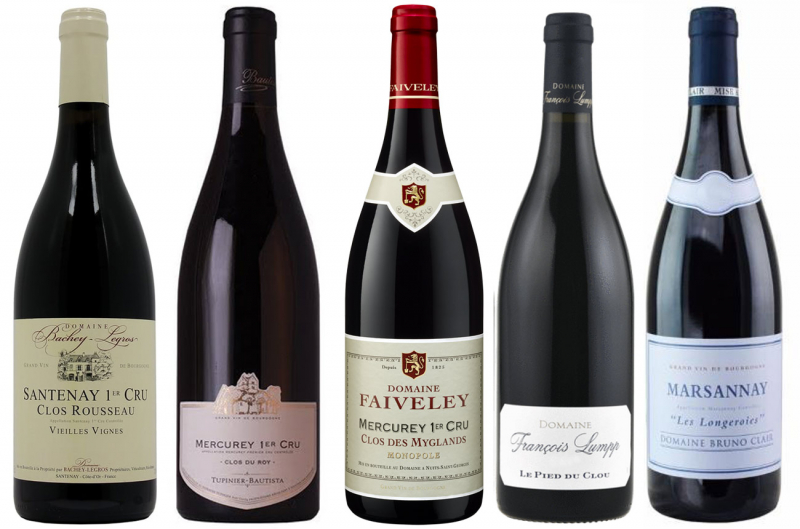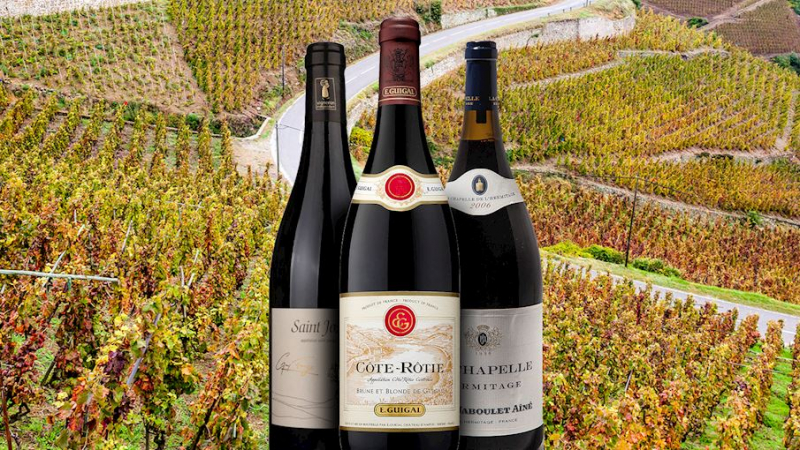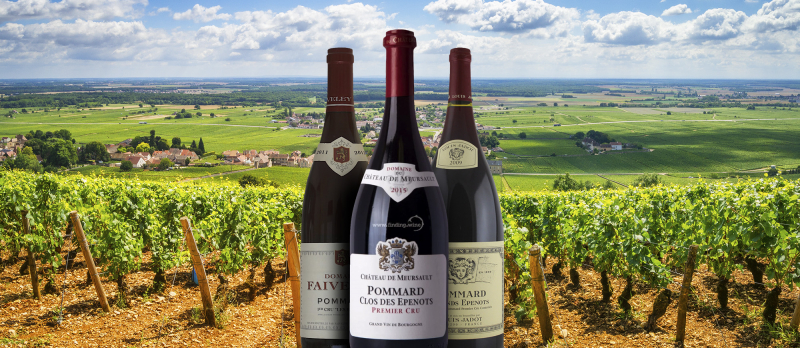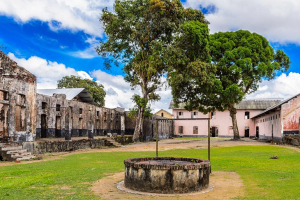Top 10 Most Famous French Red Wines
Red wine is a type of wine made from dark-colored grape varieties. The actual color of the wine can range from intense violet, typical of young wines, through ... read more...to brick red for mature wines and brown for older red wines. Red wine is a delicacy around the world, but it is said to have the best red wine brands in France. Let's discover some red wine brands in France with Toplist.info!
-
Bordeaux region is the largest wine-growing area in France that comprises more than fifty different appellations. Bordeaux wines can range from massively produced everyday table wines to prestigious and expensive vintages. The predominant style is red, but the region also produces sweet and dry whites, rosés, and sparkling wines.
Red Bordeaux wines are mostly produced from Cabernet Sauvignon, Cabernet Franc, Petit Verdot, Merlot, Malbec, or occasionally Carménère. They are soft, elegant, and silky, with aromas of dark fruit, truffles, spices, smoke, tar, and leather. Because they are typically medium to full-bodied, they perfectly pair with patés and terrines, grilled meat, roast beef, game pies, and goat and sheep cheese.
The world of Bordeaux wine is a subtle blend of heritage and modernity, loyal to its history and open to the world. Six thousand one hundred winegrowers, 300 négociants, 33 wine cooperatives, and about 100 brokers make up the wine industry in the Bordeaux region. The Bordeaux wine industry is Gironde’s top employer – it is brimming with experts in all the wine-related fields. The apparent complexity of the Bordeaux wine industry encompasses excellent diversity and profound authenticity, as well as a tradition dating back three centuries.
Detail information:
Website: https://www.bordeaux.com/us
Instagram: https://www.instagram.com/bordeauxwines/
Facebook: https://www.facebook.com/Bordeauxwine

Bordeaux 
Bordeaux -
Burgundy wine is made in the Burgundy region of eastern France, in the valleys and slopes west of the Saône, a tributary of the Rhône. The most famous wines produced here, commonly called "Burgundies," are dry red wines made from pinot noir grapes and white wines made from chardonnay grapes.
Burgundy boasts over 100 approved wine-growing areas regulated by a complex classification system. Quality divides the region into grand cru, premier cru, village wines, and regional appellations. The wines are greatly influenced by age and terroir, and they show great diversity in flavors and aromas. Most Burgundy reds display complex and layered aromas of fresh fruit, spices, and earthy notes of leather, truffle, or mushrooms. At the same time, matured varieties tend to develop more juicy expressions of cooked fruit or jam.Burgundy pays attention to the area of origin, and which of the region's 400 types of soil a wine's grapes are grown. As opposed to Bordeaux, where classifications are producer-driven and awarded to individual chateaux, Burgundy classifications are geographically-focused. A specific vineyard or region will bear a given category, regardless of the wine's producer. This focus reflects on the wine's labels, where appellations are most prominent, and producers' names often appear at the bottom in much smaller text.
Burgundy is home to some of the most expensive wines globally, including Domaine de la Romanée-Conti, Domaine Leroy, Henri Jayer, Domaine Leflaive, and Domaine Armand Rousseau.
Detail information:
Website: https://www.burgundywine.com/
Burgundy 
Burgundy -
Although Syrah is an internationally known grape planted worldwide, it attains distinctive character in the northern Rhône—which is often dubbed Mecca for Syrah. There are several theories about the grape's origin, but it has been widely accepted that Syrah is native to France and probably originated somewhere in the Rhône valley.
Syrah-based wines from the northern Rhône often differ in style, but they are robust, full-bodied reds that can age exceptionally well. They usually display aromas of dark fruit that evolve into peppery, earthy, and herbaceous nuances. Northern Rhône is also home to the premier Syrah-based appellations such as Côte Rôtie, Hermitage, Saint-Joseph, Crozes-Hermitage, and Cornas. In the southern Rhône, Syrah is mainly used to add the dominant Grenache. Syrah-based wines generally pair well with grilled or braised meat, stews, and game. Traditionally, French appellations do not include the grape's name on the label.
When you taste Syrah, you'll be greeted with a punch of flavor that tapers off and then has a spicy, peppery note in the aftertaste. Because of its style, Syrah is often blended with grapes that add more mid-palate, such as Cabernet Sauvignon, to help make the wine taste more complete. In France, Syrah is blended with light-bodied Grenache and even richer Mourvedre to create the classic Côtes du Rhône blend.
Detail information:
Website: https://wineinsiders.com/collections/syrah-shiraz

Syrah 
Syrah -
Beaujolais is a light-bodied red wine with relatively high amounts of acidity. It is made in the historical wine-producing region Province of Beaujolais, mainly from the thin-skinned Gamay grape, making it very low in tannins. Therefore it is often treated like white wine and served slightly chilled.
The wine takes its name from the historical Province of Beaujolais, a wine-producing region. It is located north of Lyon and covers parts of the north of the department of the Rhône, the Rhône-Alpes region, and the southern areas of the department of Saône-et-Loire, in Burgundy. While administratively considered part of the Burgundy wine region, the climate is closer to that of the Rhône, and the wine is sufficiently individual to be considered apart from Burgundy and Rhône. The area is known internationally for its long tradition of making wine for the use of carbonic maceration, and more recently, for the famous Beaujolais Nouveau.
Although it rarely needs decanting, it will gain some aromatic complexity after being open for a while, with a fresh cherry and blackberry fruit nose and spicy, earthy notes in the background. It is classified in three categories: Beaujolais AOC, Beaujolais Villages AOC, and Cru Beaujolais.
Beaujolais can be paired with a wide range of dishes according to the body. Beaujolais Nouveau, the lightest and mass-produced style of this wine, is typically used as an aperitif with salads; the lighter Cru Beaujolais, such as Brouilly, Régnié, and Chiroubles, pairs well with poultry, while the heavier and more affluent, fullest bodied of Cru Beaujolais, like Morgon, Régnié, and Juliénas, pair better with red meats and stews.
Detail information:
Website: https://www.beaujolais.com/en/
Instagram: https://www.instagram.com/vins_beaujolais/
Facebook: https://www.facebook.com/vinsdubeaujolais/
Beaujolais 
Beaujolais -
Saint-Émilion is one of the most exceptional appellations in Boudreaux. It locates on the right bank in the Libourne wine region of Bordeaux. Although classic Bordeaux varieties such as Cabernet Sauvignon, Carménère, Petit Verdot, and Malbec can be used in their production, Saint-Émilion wines are mostly made from Merlot and Cabernet Franc.
Saint-Émilion stays on one of the many hills surrounding the Bordeaux wine-growing landscape. Their wine-growing landscapes were the first in the world to be listed as a UNESCO World Heritage Site. The diversity and abundance of its wines make up an infinitely nuanced picture, one of the principal masterpieces of a region with so many great vineyards. Saint-Émilion, Saint-Émilion Grand Cru, Lussac Saint-Émilion and Puisseguin Saint-Émilion. Four AOCs and so many words describe the delight of the senses, unique circumstances, and sharing unforgettable memories for so many people.
Often described as approachable and soft, these wines are characterized by powerful aromas of fresh fruit, primarily red berries, often accompanied by nuances of spices, cedar, pine, and cocoa. With age, the tannins soften, and the wines tend to evolve aromas of truffles and undergrowth. Saint-Émilion red wine usually ages at least ten years while keeping the best examples for over thirty years. The style of these wines is best paired with charcuterie, beef, game, and flavorful cheese varieties.
Detail information:
Website: https://vins-saint-emilion.com/en/
Instagram: https://www.instagram.com/vinssaintemilion/
Facebook: https://www.facebook.com/vinssaintemilion/

Saint-Émilion 
Saint-Émilion -
Pomerol is a much-respected red wine appellation in the Bordeaux region of southwestern France. Pomerol is located in the east of the Bordeaux region, near Saint-Émilion, in the area known as the Libournais – the town of Libourne sits just to the south of Pomerol. While most appellations are named after a village or city within their boundaries, Pomerol has no such epicenter. It is an unchanging 800-hectare gravel bank. The total vineyard area of the appellation covers approximately 792 hectares.
The south and west of Pomerol have sandier soils than the slightly heavier soils in the east, including a certain proportion of clay. In this eastern section, on the marginally higher land where Pomerol meets Saint-Émilion, the best wines are produced. Three of the most highly regarded Pomerol producers such as châteaux Pétrus, Lafleur, and Le Pin.
Merlot is the dominant grape in Pomerol and plays a large part in making the wines rich, smooth, and approachable at an early age while also being capable of extended aging. Cabernet Franc is also often present, adding structure and an element of savory spice. These characteristics mean Pomerol wines are much sought after on the international market.
These renowned wines are aromatic, complex, and elegant. They are usually ruby red with aromas reminiscent of red fruit. Pomerol wines would go well with braised, roasted, or grilled meat dishes, especially beef, game, or veal. Pomerol's place in the international wine world is secure for some time to come, given the continuing increase in demand for prestigious wines and the limited production of this small, quality-focused appellation.
Detail information:
Website: https://www.bbr.com/region-906-pomerol
Pomerol 
Pomerol -
Chambolle-Musigny is a French appellation located in Burgundy, more precisely in Côte de Nuits (Côte d'Or) wine region. The whole appellation includes twenty-five Premier Cru designations and Musigny and Bonnes Mares as two Grand Cru vineyards with separate names.
The main grape variety is Pinot noir for red Musigny. The AOC regulations also allow up to 15 percent of Chardonnay, Pinot blanc, and Pinot Gris as accessory grapes in the red wine, but this is not often practiced. The wines of Chambolle-Musigny are typically described as the most "feminine" among the red wines of the Côte de Nuits, with floral elegance rather than power. Delicate and elegant Chambolle-Musigny wines typically display aromas of red fruit and violets that may develop into more complex notes of ripe fruit, truffles, and underbrush with age.
Because of its smooth and velvety texture, these wines are perfectly paired with roasted lamb and beef, as well as soft-center cheese varieties such as Brillat-Savarin or Reblochon.
Detail information:
Website: https://www.bbr.com/region-1641-chambolle-musigny

Chambolle-Musigny 
Chambolle-Musigny -
Pommard is a French appellation located in Burgundy (Côte de Beaune). The wines produced in the region are exclusively made from Pinot Noir, and they are often described as powerful, tannic, complex, and rich. There are no Grand Cru vineyards within Pommard but several highly regarded Premier Cru vineyards. The AOC was created in 1937. They are typically deep red with purple highlights, while the characteristic aromas include dark and red berries, such as blackberry, blueberry, cherry core, and ripe plums.
In 2008, there were 321.69 hectares of the vineyard surface production for Pommard wine at the village and Premier Cru level. The vineyard produced 12,892 hectares, corresponding to just over 1.7 million bottles. Pommard wines are typically among the most powerful and tannic of the Côte de Beaune wines, providing a clear contrast to the light and elegant Volnay wines from the neighboring village.
With age, they tend to display leather, spices, or chocolate nuances. These somewhat robust wines are ideal for beef, casseroles, and cheese. They are best enjoyed after at least five years of aging.Detail information:
Website: https://www.chateaudepommard.com/
Instagram: https://www.instagram.com/chateaudepommard/
Facebook: https://www.facebook.com/chateaudepommard/

Pommard 
Pommard -
Volnay is a French appellation located in Côte de Beaune sub-region of Burgundy that produces some of the best expressions of Pinot Noir. The appellation is located in the Côte-d’Or region, more precisely in the communes de Meursault and Volnay.
These rich, feminine wines are incredibly aromatic but tend to be less potent than the varieties from the neighboring Pommard. Volnay will typically have distinctive cherry notes complemented by floral aromas of roses and violets.
The color varies from bright ruby to a light garnet. Its aromas are violet, gooseberry, cherry, and - with age - spices, game, and cooked prune. It has an immediate appeal which, added to a slight natural precocity, means it can be fully open while still relatively young. The attack is fresh. The finish is warm. Drinking Volnay red wine, one seems to bite into fresh fruit and breath in its heady aroma.
Volnay red wine becomes more concentrated and tends to develop notes of preserved fruit, spices with age. Volnay wines pair well with more elaborate poultry dishes, feathered game, and flavourful cheese varieties.Detail information:
Website: https://www.wine.com/

Volnay 
Volnay -
According to legend, the Knight Gaspard de Stérimberg returned home wounded in 1224 from the Albigensian Crusade and permitted the Queen of France to build a small refuge to recover in. He remained living as a hermit. The chapel on top was built in honor of Saint Christopher and today is owned by Paul Jaboulet Âiné. This wine became the court product after Louis XIII was offered a glass during a visit to the region in 1642. Louis XIV presented King Charles II of England with 200 casks of fine wine, including examples from Hermitage, Champagne, and Burgundy. The Romanovs also imported the wine. In the 19th century, wines from Bordeaux were often "Hermitage" and could fetch higher prices as a result.
Often considered one of the most exceptional wines globally, red Hermitage wines are produced in the northern Rhône, with Syrah as the principal grape variety. Especially praised for their longevity, these robust, full-bodied, complex, and great-quality wines can also be opulent in their youth, displaying bright aromas of red fruit, as well as spicy and floral nuances.
However, the best Hermitage reds are long-lived and can be aged for decades, becoming more robust and harmonious with beautiful roundness and a long finish. At the same time, the complex aromatics display licorice, minerals, herbs, tobacco, and spices. These master-class wines can match a variety of dishes, and they naturally pair with game and beef, as well as truffles, terrines, and hearty stews.Detail information:
Website: https://www.thewinesociety.com/

Hermitage rouge 
Hermitage rouge































